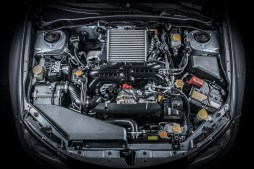Understanding the Differences: Aftermarket vs. OEM Auto Parts Explained
When it comes to maintaining or repairing your vehicle, one of the most crucial decisions you’ll face is whether to use aftermarket or OEM parts. Both options have their advantages and disadvantages, which can significantly affect your car’s performance, warranty, and overall cost. In this article, we’ll break down the key differences between aftermarket and OEM auto parts to help you make an informed choice.
What Are OEM Parts?
OEM stands for Original Equipment Manufacturer. These parts are made by the same company that produced the original components for your vehicle. For example, if you own a Ford, an OEM part would be manufactured by Ford itself or its authorized suppliers. One of the main benefits of using OEM parts is that they are designed specifically for your vehicle model and typically meet high-quality standards set by the manufacturer.

What Are Aftermarket Parts?
Aftermarket parts are produced by companies other than the original manufacturer. They can vary widely in quality – some may be superior to OEM parts while others might be subpar. Aftermarket parts are often designed to fit a variety of makes and models, providing more options for consumers looking for alternatives at potentially lower prices.
Pros and Cons of Using OEM Parts
Using OEM parts ensures that you’re receiving components specifically designed for your vehicle; this can enhance compatibility and reliability in performance. However, they tend to come with a higher price tag compared to aftermarket options. Additionally, using only OEM parts may be required under certain warranties which could limit repair choices.
Pros and Cons of Using Aftermarket Parts
Aftermarket parts often come at a reduced price point compared to their OEM counterparts; this affordability can make them appealing especially for budget-conscious consumers. They also offer a vast range of products including performance upgrades not available through manufacturers. However, quality can vary significantly from brand to brand; therefore it’s essential to research reputable brands before purchasing.
Making Your Decision: Considerations
When deciding between aftermarket and OEM auto parts consider factors like warranty requirements, budget constraints, and long-term goals for your vehicle’s maintenance or upgrades. If reliability is crucial due to ownership duration or resale value considerations while ensuring compliance with warranties is important then opting for higher-priced but reliable OEM might suit best.
In conclusion, whether you choose aftermarket or OEM auto parts ultimately depends on your individual needs as a car owner regarding cost-effectiveness versus assured quality standards offered by manufacturers’ original replacements. By understanding each option’s strengths and weaknesses you’ll be better equipped make decisions that enhance both safety on roads as well as longevity of vehicles.
This text was generated using a large language model, and select text has been reviewed and moderated for purposes such as readability.











